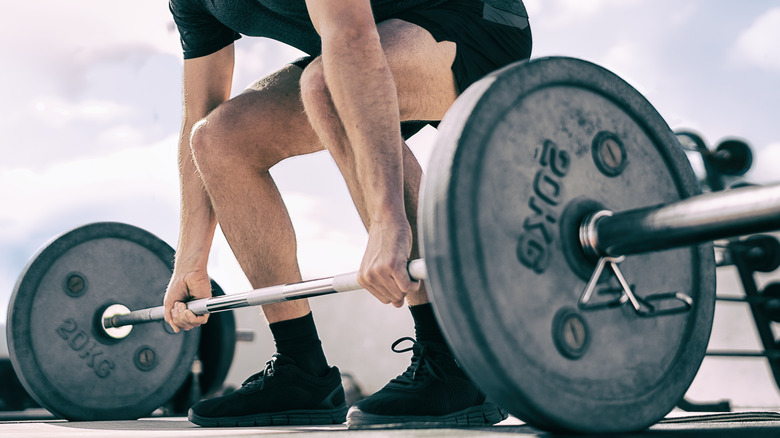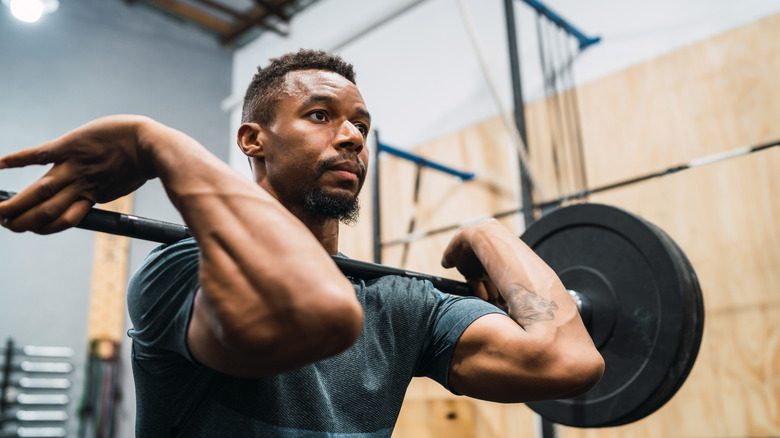How Much Does A Barbell Really Weigh?
Barbells are known as an excellent tool for resistance-training exercises. Competitive powerlifters, athletes, and regular gym goers all flock to this popular device. Unlike dumbbells, medicine balls, and kettlebells, the weight of a barbell isn't clearly marked.
Because barbells are used in both commercial and competitive settings, many manufacturers have created plate-loaded barbells that are user-friendly (via Livestrong). Since user-friendly barbells are the norm, many barbells conform to standard size, weight, and shape, and are compatible with many other brands of weight.
Still, when it comes to grabbing a barbell, there are three main types to consider — standard, olympic, and women's barbell (via Shape). The standard barbell weighs 45 pounds and is about 7 feet long. While the Olympic barbell is the same weight and size as the standard barbell, it has two caveats. They're thinner, and according to certified strength and conditioning specialist, Grayson Wickham, they have rotating sleeves. These sleeves allow the barbell to move during specific movements without rotating the plates too. On the other hand, women's barbells are all-around smaller. They roughly weigh about 35 pounds and are about 6.5 feet in length.
What are some barbell strength-training exercises?
To train your body with a barbell, it's important to first gauge your weight lifting ability, and the type of lifts you'll want to perform. This is because "different types of barbells provide you with a different type of stimulus," Wickham tells Shape. For instance, those who are intermediate or advanced lifters may find the Olympic bar best for compound movements and heavy weights (via Livestrong). Whereas a women's barbell may be more suitable for beginners due to its lightness. It also requires less stability and strength to perform a movement, points out Shape.
Nonetheless, if you're trying to sculpt and tone the lower body, some effective resistance-training exercises include deadlifts, back squats, and front squats. To perform a deadlift, make sure your chest is lifted, and that your feet are shoulder-width apart. Sit back into your hips while keeping your back straight (almost like a squat) while holding the barbell in front, then push through your hips to stand up (per Healthline).
For front squats, the barbell gets loaded onto the front of your shoulders (hence the name). Start with your feet slightly wider than hip distance apart, and engage your core as you lower down into a squat position (via Men's Health). Back squats, on the other hand, require a similar technique, but the bar gets placed on the backside of the shoulders. Men's Health suggests you'll want to focus on squeezing your mid-back and lats.


